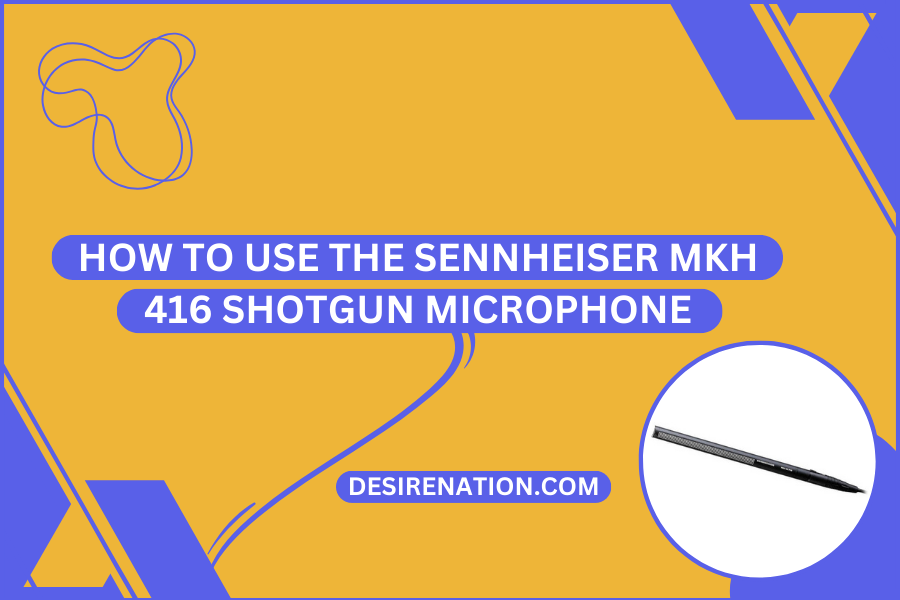The Sennheiser MKH 416 is a legendary shotgun microphone widely acclaimed for its exceptional audio quality and directional recording capabilities. Whether you’re a filmmaker, content creator, or audio professional, understanding how to use the Sennheiser MKH 416 can significantly elevate the quality of your audio recordings. This comprehensive guide will walk you through the key steps to effectively use the Sennheiser MKH 416 shotgun microphone.
Getting Started:
- Understand the Microphone:
- Familiarize yourself with the Sennheiser MKH 416’s physical features. Identify the microphone’s body, the XLR connector, and the interference tube that contributes to its shotgun design.
- Powering the Microphone:
- The Sennheiser MKH 416 requires phantom power to operate. Ensure your recording device, such as a mixer or audio recorder, is capable of supplying 48V phantom power. Connect the XLR cable to the microphone and your recording device.
Using the Microphone in Various Settings:
- Directional Recording:
- The MKH 416 is a super-cardioid shotgun microphone, meaning it captures sound primarily from the front while minimizing ambient noise from the sides and rear. Position the microphone so that the interference tube points towards the sound source for optimal results.
- Mounting the Microphone:
- Use a shock mount to isolate the microphone from handling noise and vibrations. The shock mount should securely hold the MKH 416 while providing some flexibility to absorb shocks.
- Wind Protection:
- When recording outdoors, attach a windscreen or foam cover to the MKH 416 to reduce wind noise. For windy conditions, consider using a furry windjammer for enhanced protection against gusts.
Connecting to Recording Devices:
- XLR Cable Connection:
- Connect the XLR cable securely to the microphone’s XLR connector. Ensure the other end is connected to your recording device with phantom power enabled.
- Adjusting Gain Levels:
- Set the appropriate gain levels on your recording device to avoid distortion. Experiment with different gain settings to find the optimal level for your recording environment.
Tips for Optimal Performance:
- Monitoring Audio:
- Use headphones to monitor the audio while recording. This allows you to identify any issues, such as unwanted background noise, immediately.
- Positioning for Dialogue:
- When recording dialogue, position the MKH 416 just out of the frame, pointing towards the speaker. This placement captures clear, focused dialogue in video productions.
- Post-Processing:
- In post-production, you can further enhance the audio quality by applying EQ, compression, and other audio processing tools to achieve the desired sound.
Maintenance and Storage:
- Protecting the Microphone:
- Store the Sennheiser MKH 416 in a protective case when not in use to prevent damage. Keep it away from extreme temperatures and humidity.
- Cleaning the Microphone:
- Use a soft brush or compressed air to remove dust and debris from the interference tube. Be gentle to avoid damaging the microphone’s sensitive components.
Conclusion:
The Sennheiser MKH 416 is a versatile and powerful tool for capturing high-quality audio in a range of settings. By following this comprehensive guide, you’ll be equipped with the knowledge to effectively use the Sennheiser MKH 416 shotgun microphone and achieve professional-level audio recordings for your projects. Whether you’re recording film dialogue, nature sounds, or interviews, the MKH 416’s precision and clarity will undoubtedly elevate your audio production to new heights.
You Might Also Like These:












